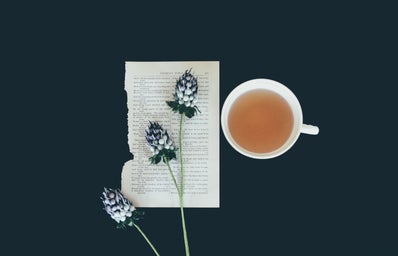Despite being written in 2004, Marjane Satrapi’s graphic novel still remains relevant today.
When people think of impactful literature, their first thought is often a heavy tome, thick with semicolons and pretentiousness. The name on the front cover is an old white man, circa 1800-something. Obviously, as every reader comes to realize, this isn’t always the case. One of the most impactful, beautiful stories that I’ve ever read is only 84 pages; I read it in about 45 minutes. It’s also a graphic novel.
Chicken with Plums tells a story of life and death, passion, and abandonment in pre-revolutionary Tehran. Although the story can be read in an afternoon, its messages and artwork will stay with you for a lifetime. Even as collegiate women in central Pennsylvania, there are messages to be taken from this story. It’s all in the central themes and how they relate to our lives.
Summary
Chicken with Plums is a graphic novel by Iranian novelist Marjane Satrapi. The novella tells the story of musician Nassir Ali Khan, Satrapi’s great-uncle. After his wife destroys his beloved tar, Nassir Ali takes to his bed and awaits his death. Over the course of eight days, Nassir Ali contemplates his past and the future of a world without himself in it. These flashbacks and flashforwards act as puzzle pieces, connecting the story of Nassir Ali Khan’s life when put together and considered as a whole.
(The article hereafter will contain spoilers for the novella.)
ABANDONMENT AND LOVE
One of the most noticeable themes in Chicken with Plums is love, love that is unrequited or unattainable. The story begins with Nassir Ali meeting with Irene, a past lover who seemingly no longer remembers him. His heartbreak over Irene’s forgetfulness is one of the factors that leads Nassir Ali to his deathbed. It is later revealed in the story that Nassir Ali only married his wife Nahid after his mother encouraged him to. Even after Nahid makes Nassir Ali his favored chicken with plums (the scene from which the title derives its name), he cannot forgive her for breaking the tar and says that he never loved her.
There are also contrasting themes of abandonment throughout the piece that contribute to Nassir Ali’s fate. Nassir Ali feels abandoned by Irene, and Nahid feels neglected in her marriage. None of the characters are fully satisfied in their relationships with one another, which creates a sort of literary tension throughout the novella.
How often do we feel these things in our own lives? Even as collegiate women, I’m certain that a fair number of us have experienced unrequited love or abandonment of some sort in our lives. How often have we been hurt to the point where forgiveness is no longer an option? Any reminder that you’re not alone can be reaffirming, and a good place to find one is within this novel. But what to do about these feelings once you’ve found yourself bound by them?
aRT AS A lIFESAVER
Art. The answer to the previous question is art. In Chicken with Plums, after Nassir Ali’s marriage proposal was rejected, he began to pour his heart into his music. His mentor remarked about how wonderfully he was playing, citing his suffering as the reason he was now playing so well. He instructed Nassir Ali to translate Irene into his music, putting her into every note he played, before sending him away. He had nothing more to teach him.
And with that, Nassir Ali put everything into his music. He spent most of his time playing the tar, to the point where he began neglecting his family to do so. He played beautifully and was revered in the music world. His tar was his life, his escape from a loveless marriage and a broken heart. So when his tar was destroyed, what else did he have to live for? His tar saved his life and doomed it by its absence.
Obviously, we should not go as far as Nassir Ali. As important as art is, it should never be put before personal responsibilities, and Nassir’s tendency to neglect himself and his family should never be romanticized. But the relief that art can provide from pain is undoubtable, and I highly recommend its use. Pouring your emotions into art of any kind allows you to work through them in a safe, healthy environment. I want to reiterate that artwork is never a substitute for proper mental health support and the “suffering artist” trope is often extremely harmful to young artists. But when faced with problems, expressing your emotions and working through them via art can be extremely healthy and productive.
Chicken with Plums is a beautiful story about the power of art, life and death, and one’s own personal impacts in the world. These are characters to see yourself in, even as college students in the modern day. The saying goes that a picture is worth a thousand words, but in the case of this book they’re both about equal.


